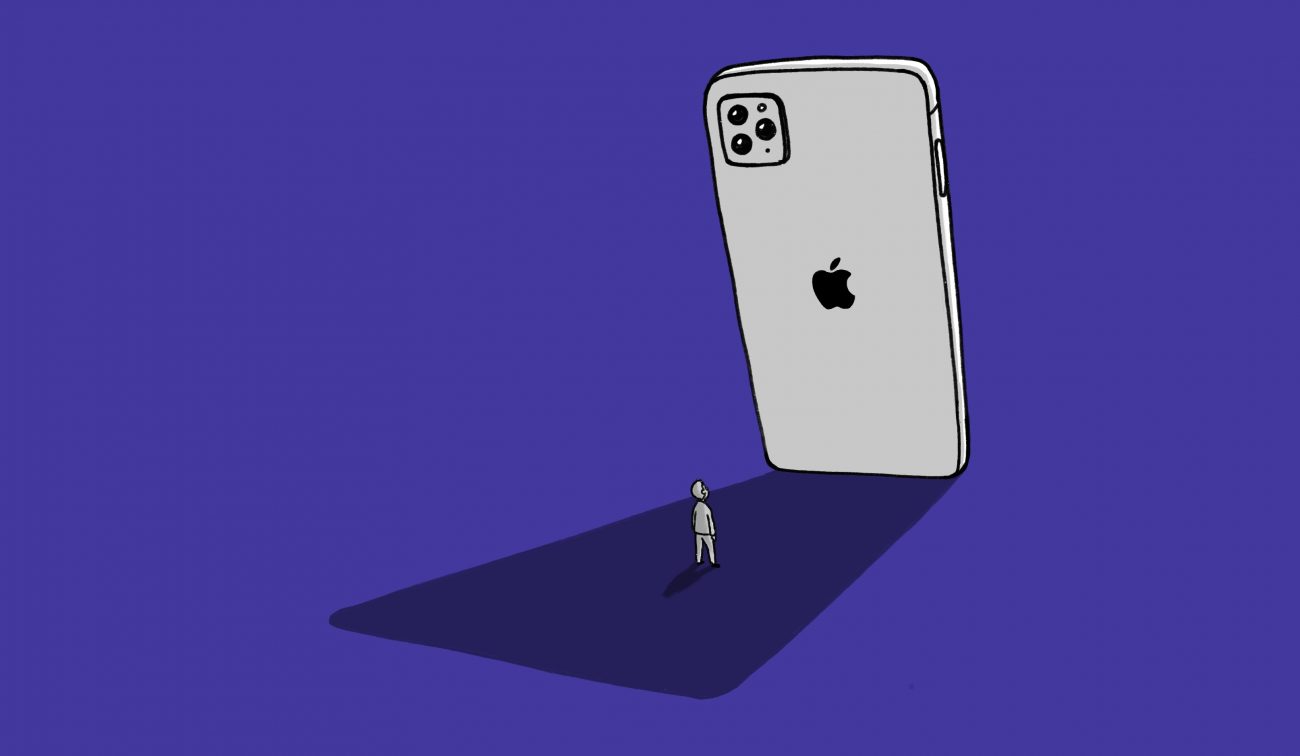Update (5 June): We updated the text to clarify that the ruling is about trademark law, and not copyright law
Today marks a set back for the right to repair movement. Henrik Huseby, a Norwegian small business owner and repairer lost his legal battle against $1 trillion company Apple in Norway’s Supreme Court. With this decision, Apple continues to effectively shut off access to refurbished or after market spare parts for independent repairers.
Apple claimed that Huseby was allegedly importing “counterfeit” iPhone screens. Huseby denied this, saying that he simply used refurbished iPhone screens that he never advertised to the public as “genuine” parts from Apple.
While the Oslo District Court ruled in 2018 that Huseby did not violate Apple’s trademark, because Huseby never claimed to be using unused original spare parts, the Court of Appeal ruled in 2019 that the imported screens are illegal copies. The case was then brought to the Supreme Court.
„This is a big victory for companies like Apple who want to shut down small businesses like mine and control the prices of repair. They can claim that the cost of changing a screen will be the same as buying a new one, so there is no value in repairing. They are blocking their competition and creating a monopoly“ says Huseby.
Huseby took a considerable risk taking this case all the way to his Supreme Court, when other businesses in the same situation have given in to Apple in order to avoid trial and considerable legal expenses.
He was supported by €10,000 in donations to his crowdfunders that arrived from hundreds of donors from Norway, Europe and the rest of the world. After having paid fees for his appeals, he now faces severe financial consequences, which include paying his own legal team and €23,000 to Apple.
Intellectual property as a weapon, by Apple’s design
The Norwegian judges made the final decision purely assessing trademark violations on these screens, based on obscure and technical details that are entirely invisible to consumers. They didn’t revisit the ruling of the Court of Appeal, while Huseby still maintains they were refurbished.
Refurbished screens made in China come from companies that remove smashed glass from the high-quality original Apple LCD and apply a new glass on it. Usually the rest of the assembly is an original, reused part, and the glass is made by a third party.
As Huseby puts it, Apple uses intellectual property law as a “weapon” by putting multiple logos and QR-codes on each component part of its screens, knowing that the Chinese grey market will not specifically cater to repairers in other countries that zealously enforce intellectual property. This creates a kind of “roulette” for repairers who want to import affordable, refurbished parts from China. Apple can then ask customs authorities in these countries to seize refurbished parts shipments.
Meanwhile, Apple refuses to sell genuine spare parts to independent repairers in Europe. So they have a choice: buy either inferior generic parts or refurbished or after-market parts, like the kind Huseby bought.
Apple’s aggressive use of intellectual property in order to shut down independent repairs will ultimately raise prices for consumers, if they are forced to choose Apple’s far more expensive authorised repairers who have access to new, genuine parts. For example, while Apple in Norway charges 1 959.75 NOK (185 EU) for mail-in service to replace the screen in an iPhone 6s, Apple’s authorised repair services in Norway charge 2699 NOK (255 EU), more than three times as much as Huseby charges, 800 NOK (75 EU).
A recent Eurobarometer survey by the European Commission shows that almost 8 in 10 Europeans think manufacturers should be required to make it easier to repair electronic devices or replace parts.
This costs the planet too, as high prices for repair push consumers to cycle through products faster and faster. A report by the EEB showed that extending the life of European smartphones by just one year would save the CO2 equivalent of taking one million cars off the road.
“Clearly the law is failing people and the planet. It’s time the law catches up”
Chloe Mikolajczak, Campaigner with the European Right to Repair campaign.
“This case was both about Apple using its power to pressure Norwegian authorities and control the process, and about the letter of the law being inappropriate to the moment we are living. Extending mobile lifecycles via repair is the best way to reduce their environmental impact, and refurbished parts are the greenest and cost-effective option.”
What comes next
The Right to Repair European campaign has helped with his fundraising efforts and is now calling for measures to prevent other repairers like Huseby having to go through this again.
We are now holding the European Commission to its commitment to “a Right to Repair” in the Circular Economy Action Plan, to ensure universal access to affordable genuine spare parts for all electronics for both repair professionals and consumers.
SIGN OUR PETITION for universal access to spare parts
To inform them of Apple’s environmentally damaging, anti-competitive win in Norway, we are sending a letter to EU Competition Commissioner Vestager and European MEPs from different political groups.

